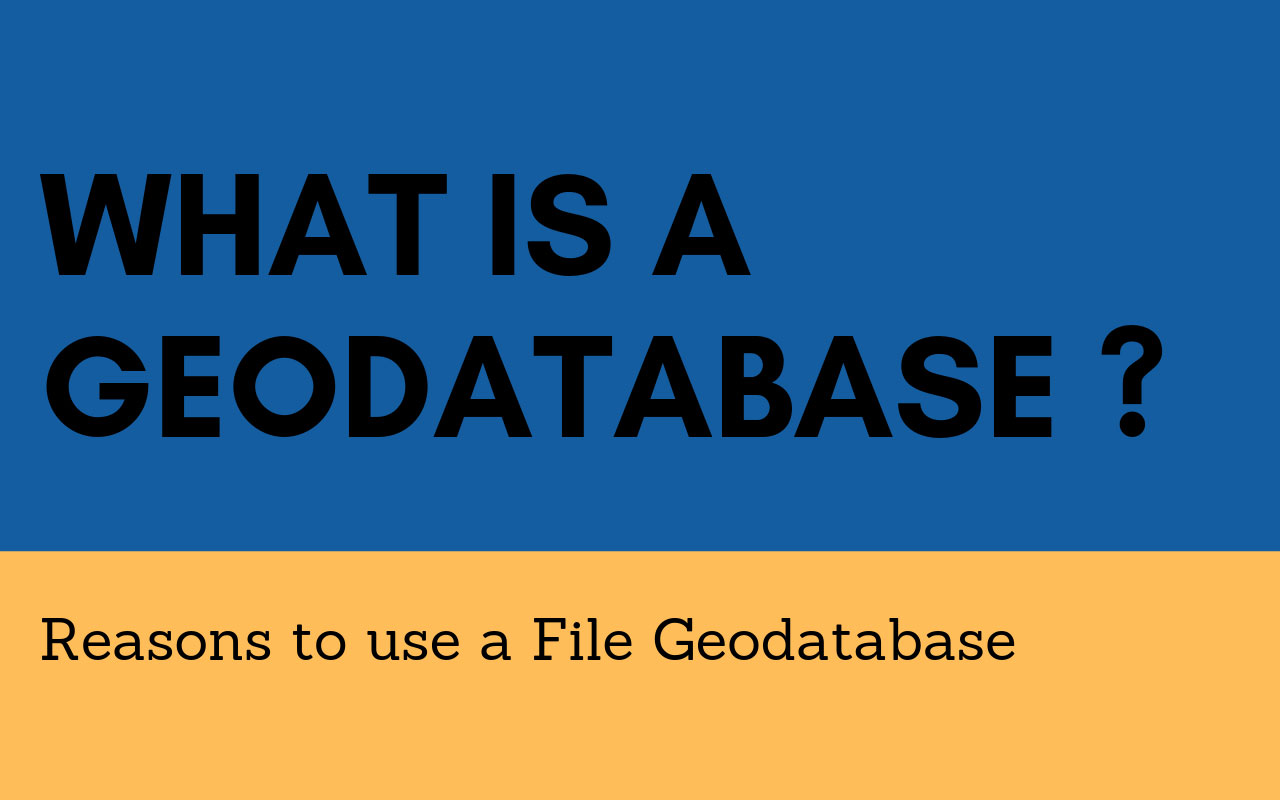A Geodatabase is an alternative way to store GIS information in a large file, which can have multiple points, polygons or polyline layers. It is also known as a spatial database. Within a local database, spatial data is considered as another data type. Vector data can be stored as a point, line or polygon data type, and can have a related spatial reference system. To store the related attributes of the object, a Geodatabase record can use geometry data types to represent the location of an object and other standard database data types in geographical position. Some also support for collecting raster data in Geodatabase. We will check each Geodatabase types like : File Geodatabase, Personal Geodatabase and Enterprise Geodatabase.
There are custom functions in many Geodatabase that allow spatial data to be used to manipulate SQL, for example to find all residents of an area within the exposure zone for possible environmental hazard. However, in some Geodatabase, spatial data can only be accessed using specific client software. Geodatabase often appears as a single file with “.gdb” extension or “.mdb” extension.
Read more: Check the complete GIS File Format list.
Architecture of a Geodatabase
The Geodatabase storage model is based on a series of simple but essential relational database concepts and leverages the power of the built-in database management system (DBMS). Simple geographical and well defined attribute types are used to store schema, rule, basis and spatial attribute data for each geographical dataset. This approach provides a formal model for storing and working your data. Through this approach, structured query language (SQL) – relational functions and a series of operators – can be used to make tables, modify, and query their data elements.
Different types of Geodatabase
- File stored in folder as Geodatabase File System. Each dataset is kept as a file which can increase in size up to 1 TB. File Geodatabase is recommended on private Geodatabase.
- Personal Geodatabase – All datasets are stored in Microsoft Access data files, which is limited to 2 GB in size.
- Enterprise Geodatabase – also called multipurpose Geodatabase, can be unlimited in size and number of users. Stored in a relational database using Oracle, Microsoft SQL Server or PostgreSQL.
Personal Geodatabase
A personal Geodatabase is a Microsoft Access database that can store, query, and manage spatial and non-spatial both data. Because they are stored in Access Databases, the maximum size of personal Geodatabase is 2 GB. Additionally, only one person at a time can edit data in individual Geodatabase.
File Geodatabase
A file Geodatabase is a collection of files in a folder on Geodatabase disks that can store, query, and manage both spatial and non-spatial data. You create a file Geodatabase in ArcGIS. File Geodatabase are composed of seven system tables and user data. User data can be stored in the datasets, called Feature Class.
Enterprise Geodatabase
When you need a large, multipurpose Geodatabase that can be edited and used by many users, then enterprise Geodatabase provides a good solution. It combines the ability to support a shared, multipurpose Geodatabase as well as support for several important version-based GIS workflows. The ability to leverage your organization’s enterprise relational database is a key advantage of enterprise Geodatabase.
Enterprise Geodatabase work with different types of DBMS storage models (like Oracle, PostgreSQL, and SQL Server). Enterprise Geodatabase are mainly used in a wide range of personal, workgroup, department, and enterprise settings.
Reasons to use a File Geodatabase.
Whether you’re working with large or small datasets, files optimized for use in ArcGIS are ideal for archiving and managing geospatial data. Whether you are working on a single user project or a project involving a small group with one or more editors, you actually consider using the file Geodatabase instead of the collection of personal Geodatabase or shapes files needed. Personal Geodatabase and file Geodatabase offers structural, performance, and data management advantages.
File Geodatabase provide many advantages over shape files and personal Geodatabase, such as:
- The file Geodatabase uses an efficient data structure which is optimized for display and storage. File Geodatabase allow you to compress the vector data in read-only format to further reduce storage requirements.
- There is no storage size limit in file Geodatabase. Within one file Geodatabase, the individual dataset, such as feature class or table, has a size limit of 1 TB.
- File Geodatabase provides better performance. For example, it can easily support a personal dataset with more than 300 million features and datasets, which can scale more than 500 GB per file, while maintaining very fast performance.
- File Geodatabase provides less restrictive editing locks. Locking can be done per table instead of whole database.
- File Geodatabase is supported by almost every platform like Windows, UNIX, Solaris and Linux.
The File Geodatabase size and name limit are as follows:
- File Geodatabase size: no limits.
- Size of the table or feature class: 1 TB (default), 25 GB from 4 GB, TB (depending on the storage format).
- Number of Feature Classes and Tables: 2,147,483,647.
- Number of fields in the feature class or table: 65,534.
- Number of rows in the feature class or table: 4,294,967,295.
- Length of the Geodatabase name: The number of characters described in operating system folder names.
- Feature class or length of table name: 160 characters.
- Field Name Length: 64 Characters.
- Text field width: 2,147,483,647.

This is nice, and very educatin